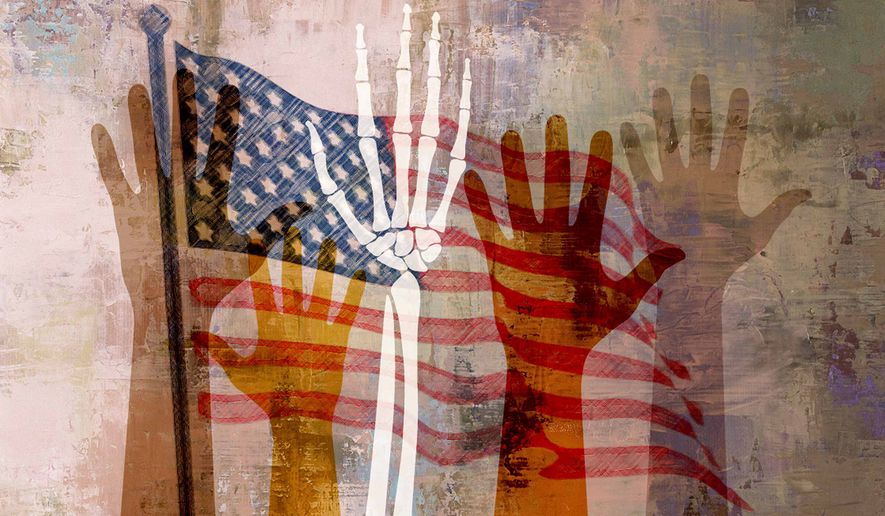OPINION:
As the White House prepares to set up a commission focused on potential voting irregularities, election officials from across the nation are busy conducting statutorily required voter list maintenance to ensure their rolls are ready ahead of the next vote. It’s an important part of protecting the integrity of our nation’s elections and saving vital taxpayer dollars.
Voter list maintenance is not a new concept born of recent controversies and allegations. In fact, the sustained list maintenance effort to improve the accuracy of voter registration rolls traces back to the National Voter Registration Act (NVRA), commonly referred to as the “motor voter” law. NVRA not only facilitates the ease of voter registration at motor vehicle offices and public assistance offices, but it also prescribes the process for updating and proper removal of outdated voter records via data shared between counties, across states, by departments of health and motor vehicle offices, the United States Postal Service and a variety of other data sources.
NVRA was strengthened by the passage of the Help America Vote Act (HAVA) of 2002, the same legislation that created the U.S. Election Assistance Commission. HAVA funded and required states to create voter registration databases to facilitate more efficient data sharing and list maintenance within and across state lines. Information sharing is the backbone of ensuring the accuracy of local voting rolls and running good elections.
As the current chairman of the U.S. Election Assistance Commission (EAC) and a former election official in Ohio, I know firsthand the challenges of maintaining accurate voter rolls devoid of deceased residents, those who have moved away and others no longer eligible to vote in a particular jurisdiction. For anyone who is not an election official, it’s akin to doing laundry, which is to say it’s a never-ending task that requires constant vigilance to keep track of all of the small stuff and often goes unappreciated by those wearing the clean clothes.
Nobody wants an accurate voting roll more than the officials who administer elections. Maintaining an accurate voting roll enfranchises voters because it lowers the likelihood of lines at the polls, reduces voter confusion and decreases the number of provisional ballots. Accurate voting lists means more voters are able to vote and have their votes counted. Updated records allow election administrators to plan, to better manage their budget and poll workers, and to improve voter experience.
While in theory maintaining accurate voter registration lists might seem pretty straight forward, it’s not. In addition to the NVRA process, states govern their own election process and officials in each of the nation’s 8,000-plus decentralized voting jurisdictions are charged with carrying out elections at the local level that adhere to state law and sometimes local rules and regulations. Helping these state and local election administrators navigate these challenges is a core mission for the EAC.
State and local election officials rely on the EAC to provide information about best practices for list maintenance, including data-matching criteria, efficient data-sharing procedures and ways to best incorporate online registration systems. One of the key ways we are doing that this year is through our 2016 Election Administration and Voting Survey, the most comprehensive set of data regarding election administration and voting across the United States. In 2014, EAVS explored the benefits of online registration, which has proved to improve the accuracy of voter registration lists. Our newest survey, slated for release this June, will also examine where voters register and the reasons election officials give when voters are removed from the rolls.
The EAC is also working directly with election officials and technology companies like Google to develop a common data format for election systems. This would allow the seamless exchange of information between election systems and jurisdictions, as well as facilitate a more accurate and efficient list maintenance process. These new tools would build on existing cross-state efforts, including the Electronic Registration Information Center and the Interstate Crosscheck Program. These two information sharing mechanisms are already used by dozens of states seeking to improve the accuracy of their voter registration lists.
To further strengthen voter registration list maintenance and continue to protect the integrity of elections, states need more resources. That’s something the White House commission should examine in its work. It’s not enough to just look back at 2016 and make observations. The commission should also assess what state and local election officials need to maintain and build on the excellent work they’re already doing and what resources may be available to help them moving forward. These officials protect the very foundation of our democracy, our vote. The Election Assistance Commission will stand with them and it is my hope that the White House commission will do the same.
• Matthew Masterson is chairman of the U.S. Election Assistance Commission.




Please read our comment policy before commenting.